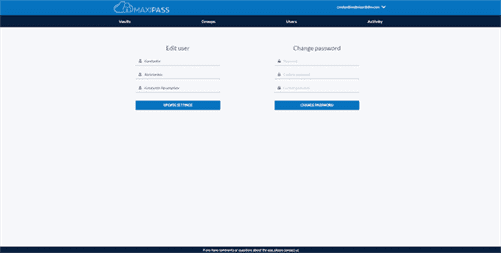API security does not entirely depend on technology because it uses JSON languages and HTTP requests. This means that software developers can use any language to automate API services for any application. Authentication is the first process involved in API security, and it verifies that your application process has a safe identity that allows you to use an API. On the other hand, authorization is the next step that determines the type of data an authenticated application has access to while communicating with an API. APIs are built with REpresentational State Transfer (REST) or Simple Object Access Protocol (SOAP). REST is famous for its simple techniques, and it has a simple architectural style for building web services.

Another key feature of API gateways is their ability to centralize security. They serve as central hubs for security policy management, streamlining the implementation of protective measures across all APIs. By creating a centralized location for API security, these gateways ensure uniform and rigorous protection, guarding against unauthorized access and emerging cyber threats. These vulnerabilities arise when attackers access legitimate user credentials or tokens, enabling them to impersonate authorized users or access privileged resources through the API. Stolen tokens or passwords can lead to unauthorized data access or manipulation.
Use OAuth2 for single sign on (SSO) with OpenID Connect
Managing the security of APIs is an increasingly vital consideration for all developers, from the start of the development process and throughout the API life cycle. In this article, we will examine ten essential solutions and tools to mitigate security risks throughout each step of the API life cycle. Additionally, API management enables an organization to optimize the value of its existing legacy systems by updating outdated security protocols so what is API Management they match the modern standards used by today’s APIs. API management software can also translate complex data from the legacy systems into easier message formats. Furthermore, API management can be used to combine all back-end services into one functionality that is exposed as an API. API analytics, the third element of API management, focuses on the centralized collection and analysis of API metrics, provided by real-time monitoring and dashboards.
- An API (Application Programming Interface) serves as a set of protocols, routines, and tools that enable different software applications to communicate with each other.
- In a large development organization, multiple teams are typically involved in building APIs and this can lead to inconsistencies in the way APIs are designed and developed.
- APIs often have to interpret unknown data, and vulnerability can be exploited if the API blindly executes that code.
- Identity and access management ensures that all applications, servers, and users that consume your API are those with the proper permissions to do so.
- API security will require time and resources to ensure that it is implemented and continues to be implemented correctly.
The station district is a crime hotspot in the city, emphasized Frankfurt police chief Stefan Müller. The approximately 10,000 crimes recorded here each year would be equivalent to the value of a medium-sized city. This included about 1100 assaults, 950 pickpockets and more than 300 cases of street robbery. Lord Mayor Mike Josef (SPD) had justified the corresponding magistrate’s decision with the tripling of knife offences in the station district since 2019. In the second smallest district of the Main metropolis, the red-light district, party mile and an open drug scene meet. «If the no-gun zone protects even one life, it’s good,» Josef said when announcing the no-gun zone.
What Is API Runtime Protection?
Without proper limits on access to resources, an attacker can easily overload your API system. It uses access tokens to authorize users to access in your API, leveraging authentication from another service to prove their identity (such as logging in via Google). This helps prevent unauthorized access attacks and broken authentication attacks. APIs have become a strategic necessity for businesses — with 96% of teams reporting that they currently use APIs.
Implementing a solid API security plan is critical to protecting your information. Crucially, the ultimate best practice is to build API security into the general mindset and process of how APIs are designed and developed. Instead of reinventing the wheel, you should opt for a mature and high-performing API Management solution with all these options to save your money, time, and resources and increase your time to market. An API Gateway will help you secure, control, and monitor your traffic. You should also restrict access by API and by the user (or application) to ensure that no one will abuse the system or anyone API in particular. At the very least you should use an API key (asymmetric key) or basic access authentication (user/password) to increase the difficulty of hacking your system.
How to choose the right API management tool
API security is not optional in a world rife with data breaches and attacks. API attacks can come in the form of malicious code that a client might try to trick an API into executing. APIs often have to interpret unknown data, and vulnerability can be exploited if the API blindly executes that code. It is important to never trust the API client, even internal consumers.

Meanwhile, older APIs – which haven’t been decommissioned, or which teams simply aren’t aware of – can sit in the background with no protection. The probability of known vulnerabilities with older APIs is also significantly higher, which amplifies the risk profile. API stands for application programming interface—a set of definitions and protocols to build and integrate application software. API security provides faster results whenever an application is tested. This is impressive because API requires less time, fewer codes, and lower costing.
Hear from our CEO: The time has come for a Super iPaaS
Throttling limits and quotas – when well set – are crucial to prevent attacks coming from different sources flooding your system with multiple requests (DDOS – Distributed Denial of Service Attack). Nothing should be in the clear for internal or external communications. This will make it much more difficult for sensitive data to end up in the wrong hands. There are ways you can do it and strategies that you can employ to reap the benefits that APIs offer while keeping all of your data safe.

Organizations are implementing strategies to manage their APIs so they can respond to rapid changes in customer demands. In most cases, these organizations adopt a microservices architecture in order to meet demands by speeding up software development. HTTP-based APIs have become the preferred method for synchronous interaction among microservices architectures.
Integrating with Infor ION Over REST API
It will help you to prevent any malicious code or data affecting your systems. Security misconfiguration is probably one of the most common issues leading to security exploits. “Shift Left” is shifting your security focus to the beginning of the API lifecycle process and integrating it into the design and development of an API.

Multi-factor authentication is when an app requests a single-use token from the user after it’s already authenticated the user’s credentials. Another method of securing application and data access is via token-based credentials. The first time a user accesses an identity provider with their username/password credentials, a token is issued. From there, rather than having users share their credentials over the network — which can present a security risk — the app only needs to send the token. API security is the first vital element of API management; it is necessary for the protection of APIs against unauthorized access and threats.
Read more articles and resources
Injection attacks occur when malicious code or data is injected into an application through an API, exploiting vulnerabilities to execute unauthorized commands. For example, SQL injection involves manipulating input to access or modify a database, potentially exposing sensitive information. Security code is a form of security that is implemented internally into the API or applications themselves. However, the resources required to ensure all the security measures are properly implemented in your API code and can be difficult to apply consistently across all of your API portfolio. In 2021, Gartner predicted that by 2022, API attacks would be the most-frequent attack vector, causing data breaches for enterprise web applications.. The growth the number of APIs, as well asthe exponential increase in API usage, has made businesses realize the importance of API security.
This includes support for external library import and repeatable data transformation patterns. Finally, API security for any technology should not forgo vulnerability and penetration testing. While we have been focusing on inappropriate access to API calls, mistakes in the coding of an API can lead to a vulnerability.
These APIs are the glue that connects all of the microservices together. Application programming interfaces (APIs) make connections between systems that enable companies to conduct business. APIs are now one of the most popular ways for applications, microservices, and containers to communicate.